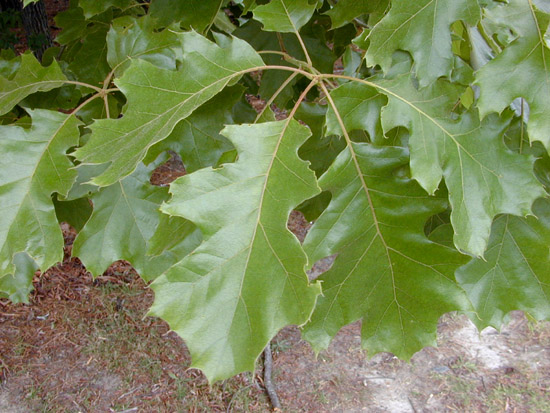
Other images:
Voucher: Kostadinov 094, 163, (URV)
Brief description: Subgenus Erythrobalanus, red and black oaks. A large monoecious tree to 40 m, the bark is very dark; the inner bark is yellow to orange. Twigs and petioles of the season are pubescent. Leaves are simple, alternate, pinnately veined, pinnately lobed with pointed and relatively shallow to deeper lobes. The foliage is glossy and glabrous (except for hairs in the axils of the veins beneath) or loosely stellate beneath and above on the midvein; the margins have bristle-tipped teeth. Flowers are unisexual, the staminate in slender catkins, the pistillate solitary or in small spikes. Fruits are a nut (acorn), partly enclosed by the persistent involucre -- the acorn cup. The acorn cup is turbine-shaped, hairy; the last ring of scales loose. The acorns mature at the end of the second season and sprout at the beginning of the third.
Campus data: Moderately frequent everywhere in the wild, not cultivated. Mature trees can be very large.